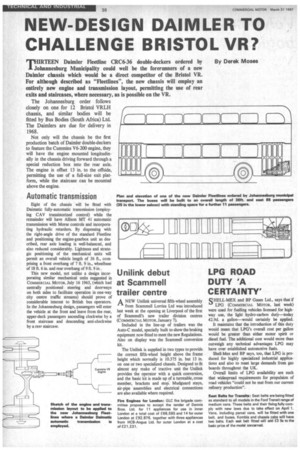NEW-DESIGN DAIMLER TO CHALLENGE BRISTOL VR?
Page 40

If you've noticed an error in this article please click here to report it so we can fix it.
IRTEEN Daimler Fleetline CRC6-36 double-deckers ordered by Johannesburg Municipality could well be the forerunners of a new Daimler chassis which would be a direct competitor of the Bristol VR. For although described as "Fleetlines", the new chassis will employ an entirely new engine and transmission layout, permitting the use of rear exits and staircases, where necessary, as is possible on the VR.
The Johannesburg order follows closely on one for 12 Bristol VRLH chassis, and similar bodies will be fitted by Bus Bodies (South Africa) Ltd. The Daimlers are due for delivery in 1968.
Not only will the chassis be the first production batch of Daimler double-deckers to feature the Cununins V6-200 engine, they will have the engine mounted longitudinally in the chassis driving forward through a special reduction box into the rear axle. The engine is offset 13 in. to the offside, permitting the use of a full-size exit platform, while the staircase can be mounted above the engine.
Automatic transmission
Eight of the chassis will be fitted with Daimatic fully-automatic transmission (employing CAV transistorized control) while the remainder will have Allison MT 41 automatic transmission with Morse controls and incorporating hydraulic retarders. By dispensing with the right-angle drive of the standard Fleetline and positioning the engine-gearbox unit as described, rear axle loading is well-balanced, and also reduced considerably. Lightness and strategic positioning of the mechanical units will permit an overall vehicle length of 36 ft., comprising a front overhang of 7 ft. 9 in., wheelbase of 18 ft. 6 in. and rear overhang of 9 ft. 9 in .
This new model, not unlike a design incorporating similar mechanical units suggested in COMMERCIAL MOTOR, July 16 1965, (which had centrally positioned steering and doorways on both sides to facilitate operation in one-way city centre traffic streams) should prove of considerable interest to British bus operators. In the Johannesburg design, passengers will enter the vehicle at the front and leave from the rear, upper-deck passengers ascending clockwise by a front staircase and descending anti-clockwise by a rear staircase.
















































































































